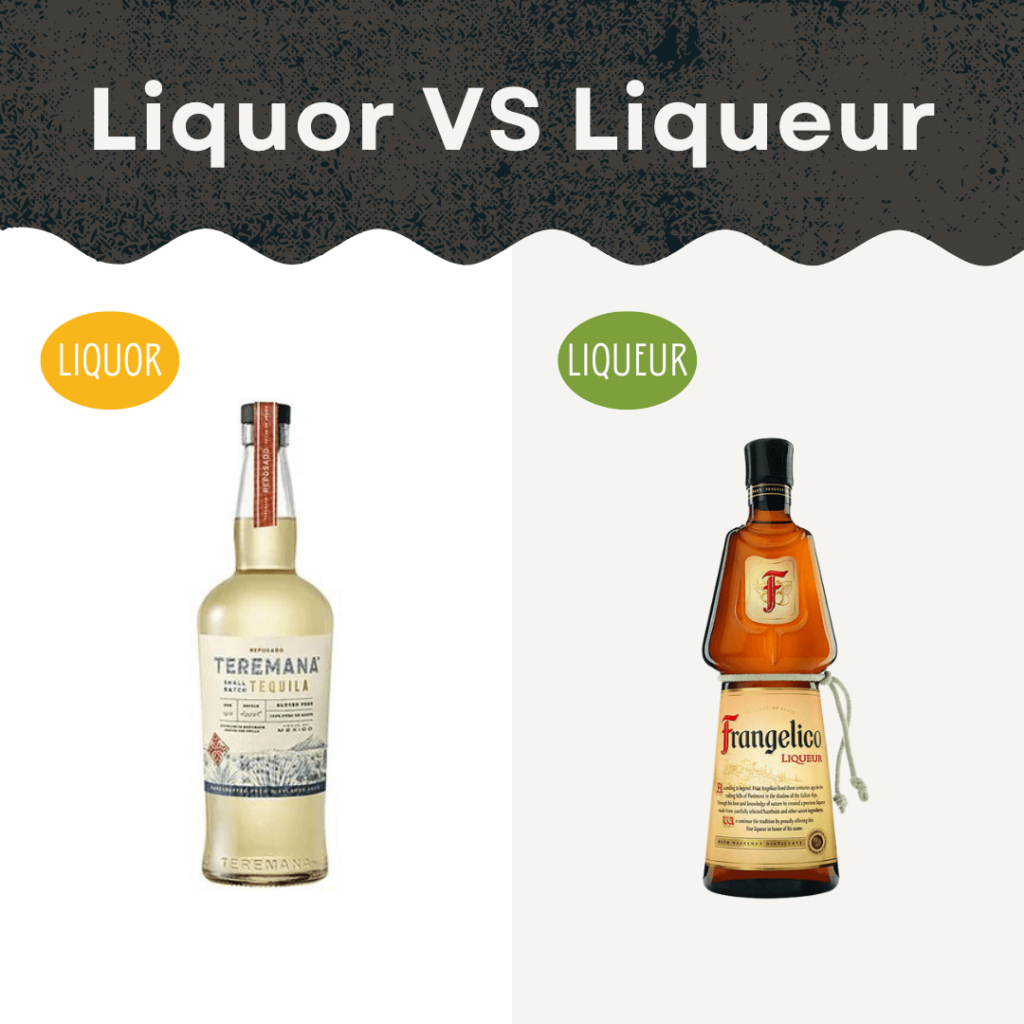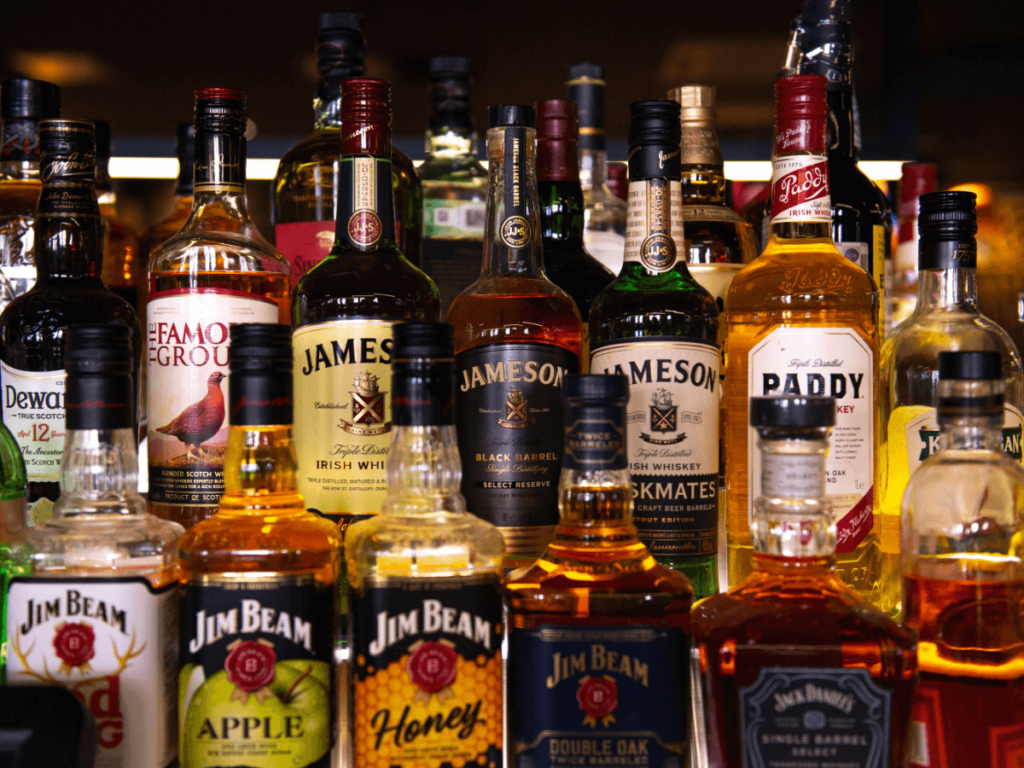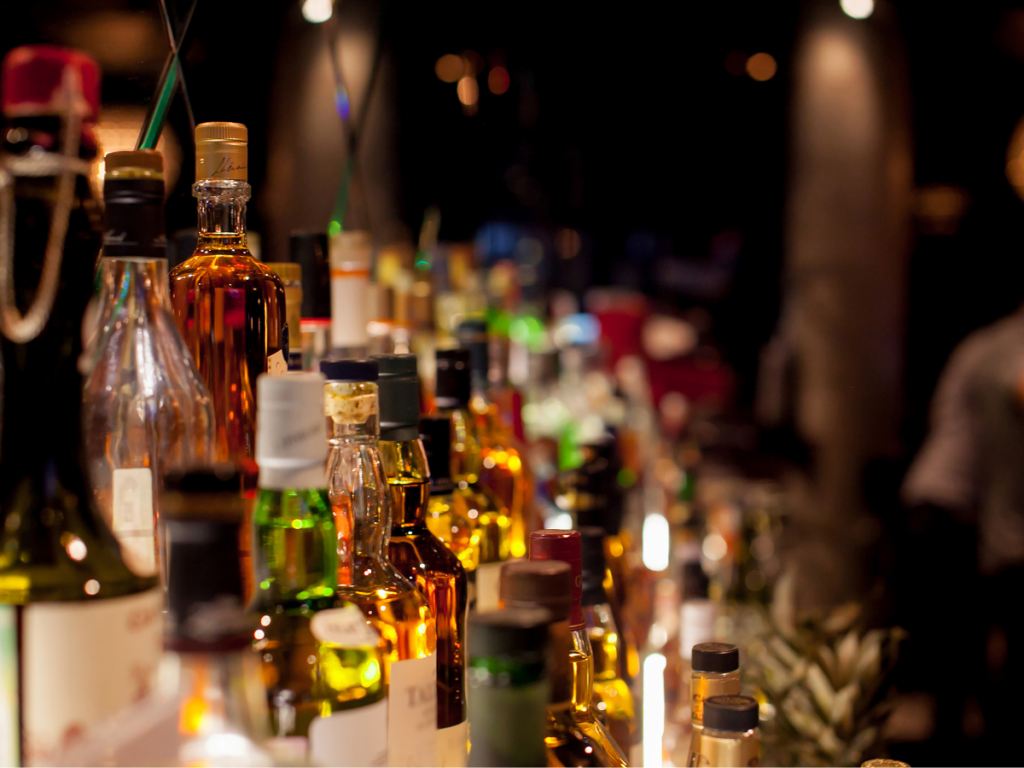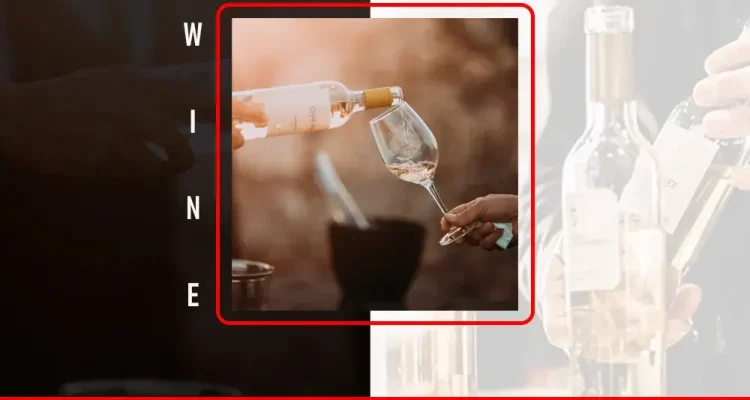Probabilmente avete già lottato per aprire una bottiglia senza apribottiglie. Ebbene, le vostre lotte...
Liquore VS liquore: qual è la differenza
Today we’re talking about two types of alcoholic drinks that often get confused – liquor and liqueur.
You’ve definitely heard of both before. From vodka and whiskey to Bailey’s and Kahlua, these strong spirits are staples behind most bars and can totally transform a cocktail. Or just be sipped on their own!
Ma anche se sembrano molto simili e sono entrambi bevande alcoliche per adulti, il liquore e il distillato sono in realtà molto diversi.
I didn’t really understand the exact differences myself until recently!
So in this article, we’ll break down what sets liqueurs and liquors apart, look at some popular varieties of each, and go over how you can use them.
Liquore VS liquore: Qual è la differenza
First off – pronunciation. I’ve heard both liquor and liqueur incorrectly pronounced many times. Just to be clear:
Liquor is pronounced “lick-er.”
Liqueur is pronounced “luh-kur.”
Got that? Great! With that out of the way, let’s jump right into understanding these terms.
At a basic level, liqueurs and liquors are both alcoholic beverages that contain distilled spirits. But liqueur has added flavorings like fruits, cream, herbs, nuts, spices, or even coffee or chocolate. The extra ingredients make them sweeter and more syrupy, while liquors don’t contain added sugar or flavors.
Ha senso finora? Ricapitoliamo la distinzione chiave: Il liquore si riferisce agli alcolici distillati come vodka, rum, whisky, ecc. Il liquore utilizza il liquore come base ma con l'aggiunta di aromi.
Now you might be wondering – how did these flavorful liqueurs come about? And what exactly IS the process of distillation that liquors go through? Good questions! Let’s explore those next.
Storia e produzione
L'uomo distilla liquori da migliaia di anni! Alcuni dei primi liquori distillati furono probabilmente creati intorno al XII secolo in Italia e in Francia. A quel tempo, si pensava che molti liquori avessero proprietà medicinali o speciali poteri curativi. Nel corso del tempo, le ricette e le tecniche si sono diffuse in Europa, Medio Oriente e Asia.
Today, we of course know liquor more for its intoxicating effects than any health benefits. But fun fact – even in the 1500-1600s, liqueurs were still largely used as medicine rather than recreational drinks. Their viscous texture and concentrated herbal flavors made liqueurs sort of a sweetened cure-all tonic. It wasn’t until hundreds of years later that they became popular as after-dinner drinks or cocktail mixers.
Che si tratti di liquori di base o di liquori aromatizzati, il primo passo è la fermentazione. Ciò significa esporre gli zuccheri e gli amidi al lievito, che li converte in alcol. La fermentazione è essenziale non solo per gli alcolici, ma anche per cose come il vino, la birra, il pane e persino lo yogurt!
Next comes the truly defining process – distillation. This involves heating up fermented liquids to the point that alcohol evaporates, then collecting and cooling those alcohol vapor droplets. Repeating this redistillation makes the end product higher and higher proof.
What’s left is concentrated ethanol alcohol alongside various organic compounds that provide taste, aroma, and complexity. The more times it’s redistilled, the purer and cleaner the liquor becomes. Vodka is one of the most extremely distilled spirits, getting up to 95% ABV!
Altri liquori, come il whisky e il brandy, sono sottoposti a condizioni di distillazione molto specifiche per evidenziare i sapori desiderati. La variazione di fattori come la temperatura, la forma dell'apparecchiatura, gli ingredienti fermentati e il tempo di invecchiamento conferisce a diversi tipi di liquori classici come il rum, il gin e la tequila il loro carattere distintivo.
Now let’s go back to liqueurs. As we learned already, they start with a fermented and distilled base liquor. The extra step is infusing, mixing, and sweetening it with anything from fruits, nuts, spices, herbs, flowers or bark to chocolate, caramel, honey, dairy cream, eggs, and more.
Oggi esistono migliaia di liquori unici, con infinite combinazioni di basi e aromi. Alcune ricette di liquori sono state strettamente custodite come segreti per generazioni!
Varietà popolari di
Alright, now that we understand how they’re made, let’s go through some popular types of liquor and liqueur along with what makes them special. We won’t have time to cover them all, but these are definitely the heavy hitters you’ll encounter at the bar or liquor store.
Tipi di liquore
Partendo dai liquori, le categorie principali sono:
- Vodka: Typically made from grains like wheat, rye, or potatoes. This neutral spirit becomes a “blank canvas” for both cocktails and infused flavor varieties like lemon, vanilla, or cinnamon vodka. Popular brands include Smirnoff, Absolut, Tito’s, and Ketel One.
- Rum: Prodotto con sottoprodotti della canna da zucchero, come melassa o succo fresco. Le varietà di rum scuro e chiaro aggiungono dolcezza e carattere alle bevande tiki e ai cocktail estivi. Captain Morgan, Bacardi, Malibu e Myers sono alcuni dei più venduti.
- Tequila: Mexico’s most iconic spirit comes from the agave plant. From mixed drinks like the Tequila Sunrise to salt-rimmed shots, this liquor with herbaceous flavors makes the party more fun. Patron, 1800, Casamigos, and Jose Cuervo rule the blue agave game.
- Whisky: Usually distilled from fermented grain mash including varieties like corn, barley, rye or wheat. Aged in wooden barrels for complexity. Bourbon, Scotch, Irish, and Tennessee styles like Jack Daniel’s, Jameson, and Crown Royal define whiskey’s popularity.
- Gin: Juniper-flavored liquor made from neutral fermented grains. The juniper berry’s bracing pine quality refreshes cocktails like the Martini and Gin and Tonic. Top brands are Tanqueray, Aviation, Bombay Sapphire, and Hendrick’s.
- Brandy: Creata distillando succhi di frutta come mele o uva in un'eau de vie liscia e poi invecchiata in rovere. I tipi più famosi sono il Cognac e l'Armagnac francesi. Hennessy, Courvoisier e Martell godono di grande prestigio.
Tipi di liquori
Those cover the major liquor bases you’ll encounter. Now what about delicious liqueurs? Some of the main liqueur varieties are:
- Frutta: Presentano sapori dolci come la mora, l'arancia, la pesca, il melone o i frutti di bosco. Questi cordiali conferiscono un sapore festoso ai cocktail. Ne sono un esempio Cointreau, Grand Marnier, Chambord e limoncello.
- Caffè: Miscele come il Kahlua e il Tia Maria rendono i drink del dopocena come l'Irish Coffee ancora più indulgenti. La miscela di caffè e alcolici crea una combinazione confortante e sofisticata.
- Crema: Creamy liqueurs have an airy, velvety texture thanks to added dairy or eggs. Bailey’s Irish Cream and Amarula fruit cream give dessert cocktails a decadent edge.
- Cioccolato: Per il massimo del piacere, i liquori al cioccolato come Godiva e Tiramisù soddisfano la voglia di bere in forma alcolica. La profondità ricca e riscaldante li rende un'aggiunta naturale ai martini.
- A base di erbe: Questa categoria di sapori comprende liquori a base di erbe, fiori, semi, spezie, corteccia d'albero, radici, vaniglia e altro ancora. Queste complesse infusioni botaniche includono Chartreuse, St. Germain, Benedictine, Drambuie e Jagermeister.
- Dado: Toasted nut flavors give these liqueurs full body and subtle sweetness. Frangelico’s hazelnut and Disaronno’s almond profiles make them mixers that instantly elevate fall and winter drinks.
Of course we’ve still just barely scratched the surface of all the liqueurs out there today, not to mention the rising tide of creative craft liquor distilleries. But knowing this lineup will help you understand menus and recipes much better.
Utilizzo di liquori e distillati
Now you know what makes liqueurs different from straight liquor. So how do bartenders actually use them in drinks? And what’s the best way to drink them when you’re not mixing cocktails?
Liquors are extremely versatile thanks to their neutral flavor. As “base spirits,” they build the foundation of all kinds of cocktails balancing stronger boozy impact with other sweet, sour, or herbal elements. They can also be simply sipped neat, over ice, or with a basic mixer like soda, juice or tonic water.
Vodka’s mild profile suits chilled shots, refreshing mixed drinks like vodka soda or Screwdriver, and picks up other flavors easily in infusions. Gin plays nicely with lighter mixers like tonic, citrus, elderflower, or cucumber to round out its juniper bite in G&Ts and gimlets.
Whiskey’s complexity shines when drunk straight or on the rocks but also adds depth to an Old Fashioned or Manhattan when combined with bitters, sugar, and other liquors. And tequila adds Southwestern flair to spice up margaritas, sangrias, and spicy-smoky combinations.
Rispetto ai liquori, i liquori hanno un uso più specifico grazie alla loro natura molto dolce e forte. Sono sufficienti piccoli spruzzi per avere un impatto notevole. Una quantità superiore a mezzo grammo o giù di lì sovrasta rapidamente gli altri ingredienti.
Classicamente, nell'Europa aristocratica i liquori comparivano alla fine degli stravaganti banchetti per favorire la digestione. Oggi i cocktail dopo cena a base di caffè, come l'Irish Coffee e l'Espresso Martinis, sono caratterizzati da liquori simili. La loro ricchezza contrasta l'amaro del caffè per una dolce indulgenza.
Nei cocktail, i liquori colmano il divario tra le basi del liquore e i sapori aggiuntivi. Basta vedere come il Triple Sec, un liquore all'arancia dolce, unisce la tequila al succo di agrumi in un Margarita. O come l'Heering alla ciliegia si sposa così bene con il brandy e il vermouth in un Manhattan.
Bittersweet herbal liqueurs add intrigue to simple two-ingredient combos too – think Campari and gin or Aperol and prosecco. Even just adding a splash of one to a dram of straight whiskey makes for a warming, gently enhanced take on a classic spirit.
Thanks to sweeter flavors that offset liquor’s punch, many liqueurs also make great introductory alcohols for those new to drinking too. Berries and cream Baileys over ice proves far more approachable than harsh whiskey or vodka to start with.
E l'ultimo modo in cui molti apprezzano i liquori è semplicemente da soli, come bicchierino ghiacciato o sorsetto decadente. Servendo il Drambuie nocciolato e speziato o il Kahlua baciato dal caffè lisci, si lascia trasparire la loro intensità concentrata e levigata dallo zucchero.
Conclusione
We’ve covered quite a bit of ground going through all things liquor and liqueur! To recap, the key points about each are:
Liquori:
- Si riferisce a qualsiasi acquavite con un tenore alcolico compreso tra 40 e 55% ABV.
- Prodotto tramite fermentazione e distillazioni multiple per garantire la purezza.
- Include vodka, rum, tequila, gin, brandy, whisky.
- Versatile per essere bevuto liscio o miscelato nei cocktail
- Conferisce l'aroma dell'acquavite di base, ma senza aggiungere dolcezza.
Liquore:
- Inizia con una base di liquore distillato e con l'aggiunta di aromi.
- Solitamente l'alcol è più basso, intorno a 15-30% ABV
- Include stili di frutta, caffè, crema, noci, spezie e cioccolato.
- Fornisce una ricca dolcezza, viscosità e complessità floreale/erboristica.
- Utilizzato soprattutto in piccole quantità per arricchire i cocktail.
To share a memorable analogy I once heard: Think of liquor as the canvas and liqueur as the paints. You start with blank neutral spirits, then splash in intensely vibrant liqueurs for bursts of color…transforming your basic canvas into a vivid, flavored cocktail masterpiece!
Al di là del loro uso in mixologia, i liquori e i distillati hanno anche una storia molto affascinante. Abbiamo analizzato come si sono evoluti da tonici a base di erbe medicinali, secoli fa, fino a diventare i pilastri dei cocktail di oggi. Alcune ricette di liquori sono ancora segreti strettamente custoditi dopo centinaia di anni!
Sia che preferiate il whisky liscio, sia che amiate una scusa per bere il dessert con il Baileys con ghiaccio, sia che giochiate a fare i mixologist a casa vostra, preparando nuovi intrugli, spero che questo vi abbia fornito un'utile suddivisione tra liquore e liquore per arricchire la vostra conoscenza degli alcolici!
We just covered a whole lot of information, but don’t feel overwhelmed. Getting familiar with some go-to liquor brands you enjoy and experimenting with liqueur flavors can be super fun. No need to learn all their nuances in just one night!
When starting out, sweeter liqueurs tend to be more mixable for beginners too compared to harsher straight liquors. Feel free to start slowly sipping rather than shooting if that’s needed to acquire the taste!
No right or wrong way here – just discover what types of liquor and liqueur suit your preferences.
Grazie per esservi sintonizzati con me per esplorare questo argomento di curiosità sui cocktail! Alla prossima volta, salute!






